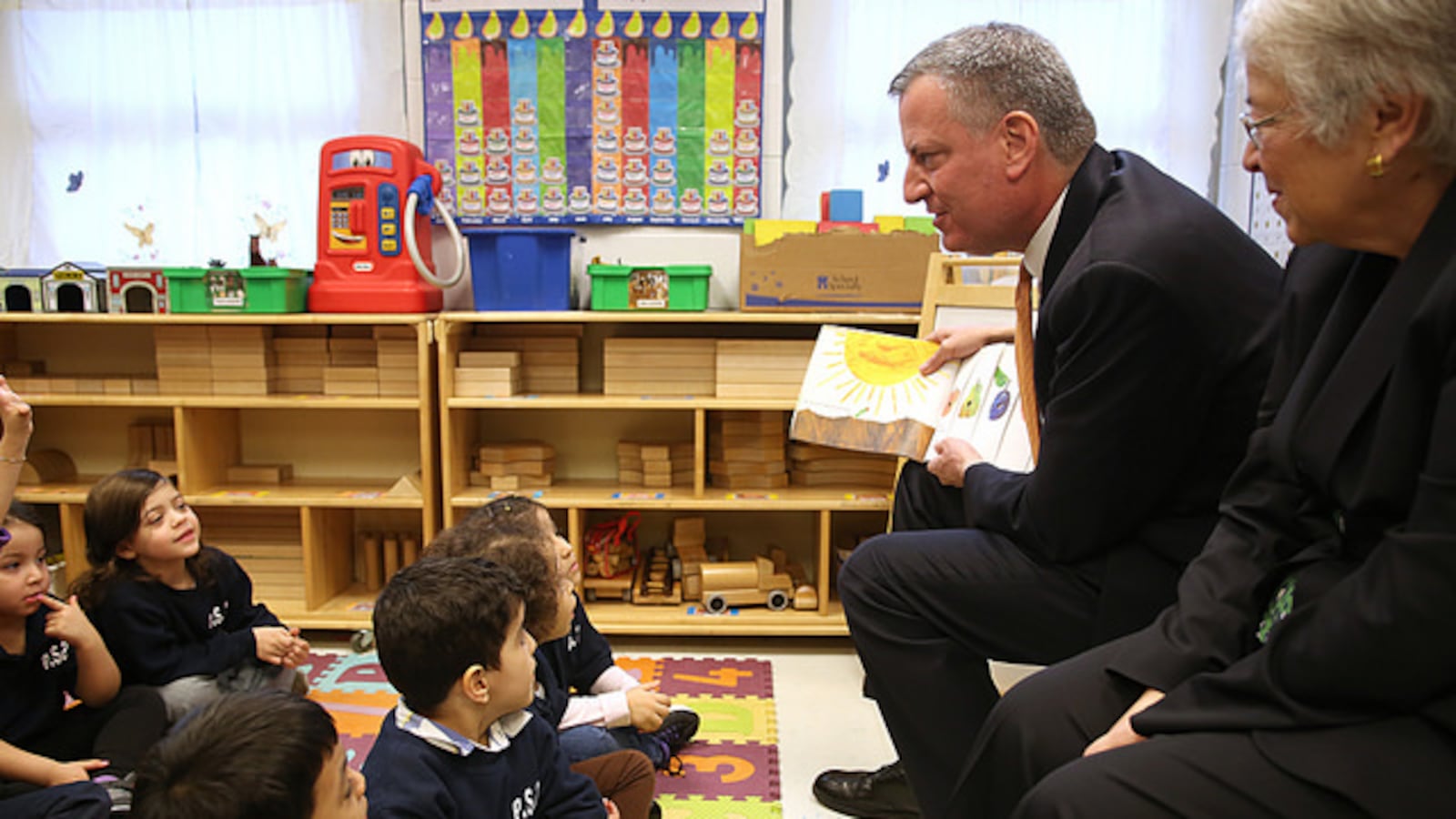Mayor Bill de Blasio announced plans last month to extend pre-K to 3-year-olds, a massive expansion of his popular Pre-K for All program. But a little-noticed element of the proposal could be just as significant: He called for the Department of Education to take over programs that reach children as young as six weeks old.
As planned, the department would create a cradle-to-college approach that shepherds students and families from infancy through 12th grade. The shift signals a recognition that learning starts at birth — and so do the inequities that drag down academic achievement later in life.
Shael Polakow-Suransky, president of the Bank Street College of Education, called the decision “a big deal” and said it would put New York City in line with other nations that already prioritize infant and toddler learning.
“If you aren’t creating a really nurturing environment where there’s opportunity for learning and exploration for infants and toddlers,” he said, “you’re actually cementing a set of challenges in terms of how their brains develop and what their opportunities are going to be once they get to the point of pre-K or kindergarten.”
Under the proposal, the education department would assume responsibility for EarlyLearn programs, which currently fall under the purview of the city’s child welfare agency, the Administration for Children’s Services. EarlyLearn was launched under former Mayor Michael Bloomberg to streamline services for low-income families enrolled in Head Start pre-K or home-based daycare, for example.
Now, the city plans to take that consolidation even further, with Pre-K for All serving as a model. The city has been lauded for quickly rolling out universal pre-K for 4-year-olds while also ensuring quality through teacher training and regular site reviews.
“We really want to extend that structure to the younger ages and help all these programs get better,” Deputy Chancellor Josh Wallack said in an interview.
At a city budget hearing Tuesday, Chancellor Carmen Fariña said the mayor’s executive budget proposal includes more than $20 million to improve EarlyLearn programs. She also stressed that bringing early childhood services under the Department of Education will help students make a seamless transition to elementary school and enlist parents as early partners in their children’s education.
“Our commitment is just to start with kids — especially with literacy skills — as early as possible,” Fariña told Council members.
Consolidating programs could also simplify a process that now forces low-income parents to navigate four different city agencies for child care and creates a compliance maze for providers.
“It’s just easier when you’re dealing with one coherent system,” Wallack said.
Success is far from guaranteed. With more than a million students, the education department already oversees the country’s largest school system. EarlyLearn programs serve about 20,000 children ages 3 and younger.
Experts said the DOE will have to resist the perhaps natural inclination to focus too narrowly on preparing children for academics, when much of early childhood education should center around social and emotional learning.
“There are right and wrong ways to do education for those children, but children at that age are learning,” said Elliot Regenstein, senior vice president of advocacy at the Ounce of Prevention Fund. “Ideally, though, you’re going to create a segment of the education system where the joy of learning is actively cultivated.”
It remains to be seen just how sweeping the shift in responsibility will be. At least initially, the streamlining will only go so far: Voucher programs that help families afford child care are expected to remain under ACS.
Gregory Brender, co-director of policy and advocacy at the United Neighborhood Houses, which pushes for affordable childcare, said there are still unanswered questions. Discrepancies in pay between educators in city-run and privately-run centers, he said, will be chief among the concerns that will now fall to the DOE to resolve.
“What does [this move] look like for parents? We don’t really know yet,” he said. “And we don’t even know what that looks like for providers.”

